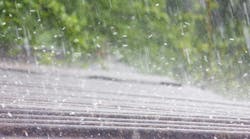FEMA Shares Insight on 2021 Hurricane Season
With the arrival of the 2021 hurricane season, FEMA Media Branch Chief Michael R. Hart shares insight into how to prepare, FEMA resources and more. Additionally, SWS has compiled all relevant hurricane news, updates, and impacts to the storm water industry in its Hurricane Hub. Visit the page for all relevant hurricane information.
How does FEMA anticipate this hurricane season to go?
Hart: FEMA urges residents in hurricane prone areas, and far inland, to prepare now for the possibility of bad weather conditions while maintaining public health guidelines to prevent the spread of coronavirus (COVID-19). Preparing your home for hurricanes can mean the difference between minor damage and complete destruction. Visit Ready.gov/hurricanes for preparedness information.
How can municipalities prepare, and what resources are available regarding disaster response?
Hart: For the second year in a row, FEMA is prepared to respond to disasters as the nation continues to recover from the novel coronavirus (COVID-19) pandemic. It is impossible to do the work that FEMA does without the help of federal, state, local, tribal and territorial partners. Being able to partner with this diverse spectrum of resources help us do our jobs better and make our response more effective to meet the needs of the communities we serve.
FEMA released the “COVID-19 Pandemic Operational Guidance: All-Hazards Incident Response and Recovery,” a document aimed at helping emergency managers plan for disaster response and recovery, while adhering to public health guidelines to prevent the spread of COVID-19. We will be holding five webinars in the next few weeks.
FEMA has also developed Evacuation and Shelter in Place Guidance that can help jurisdictions develop and revise their own Evacuation and Shelter in Place plans, as well as information on how to improve public messaging for evacuation and shelter in place protective actions.The emergency management community has learned key lessons about how to operate effectively in the COVID environment. It is critical that FEMA and our SLTT partners continue to share findings and — even more importantly — make improvements based on this experience that will benefit disaster survivors.
In partnership with NOAA National Hurricane Center and USACE, FEMA will continue to deliver the National Hurricane Program, which supports hurricane evacuation and response planning, and readiness and operational decision making, by providing training, exercises, technical assistance, data and analytics (i.e., storm surge modeling), operational support (i.e., Hurricane Liaison Team), and decision-support tools (i.e., HURREVAC).
The National Hurricane Program will continue to provide SLTT emergency managers with COVID-19 adapted virtual training and decision support tools (Hurricane Liaison Team and HURREVAC) to support operational needs for hurricane evacuation throughout the 2021 hurricane season. In 2021, in lieu of traditional in-person training, the National Hurricane Program partners provided a tailored 9-hour virtual training course that was attended by over 1,000 emergency managers.
In regards to flooding, has FEMA seen an increase in flooding in the past few years? Does FEMA anticipate flooding to increase?
Hart: A resource to consider is NOAA’s National Centers for Environmental Information’s (NCEI) 2020 disaster report. There were 22 separate billion dollar weather and climate disasters across the United States in 2020, surpassing the previous annual record of 16 events, which occurred in 2011 and 2017.The billion dollar events cost the nation a combined $95 billion in damage. The events make up the fourth-highest inflation-adjusted annual cost total since 1980 and more than double the 41-year average of $45.7 billion.
What resources are available to municipalities to help recover from flooding?
Hart: Floods are the most common natural disaster in the United States. Visit Staying Safe After a Flood for additional information.


